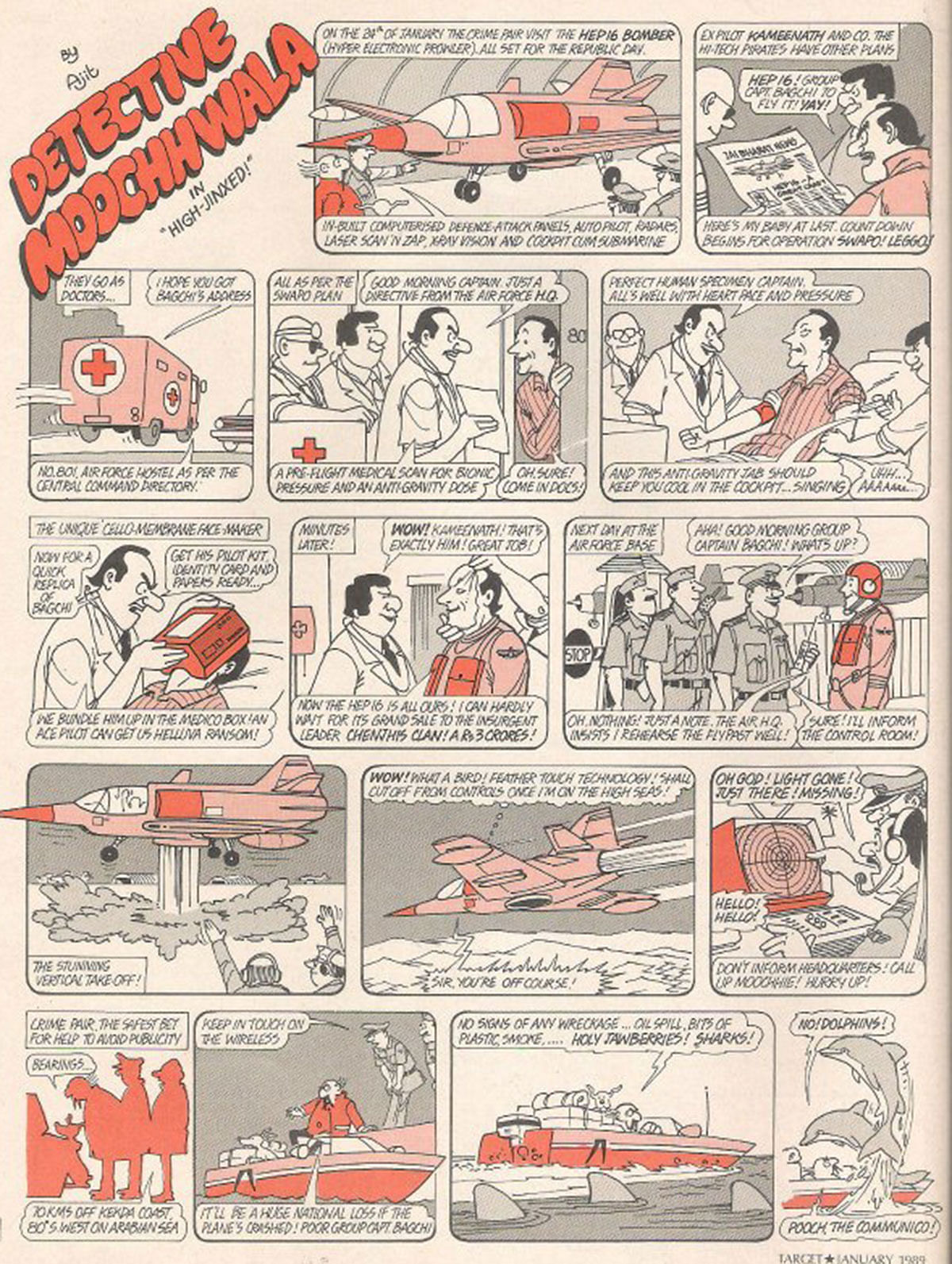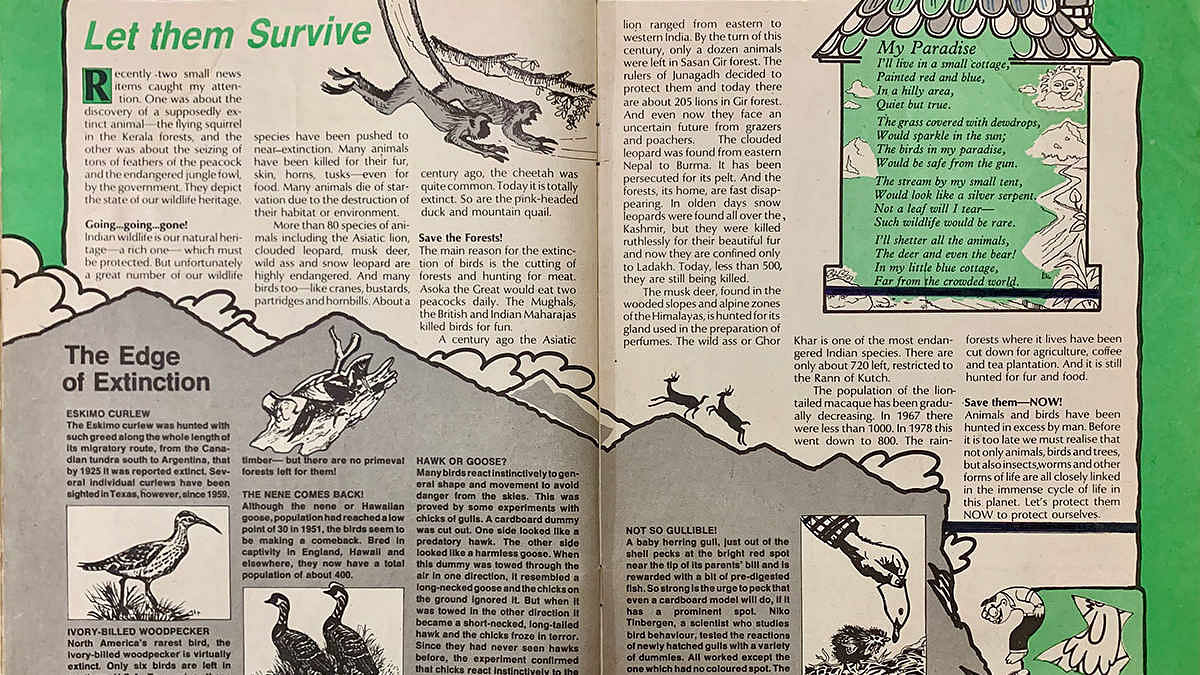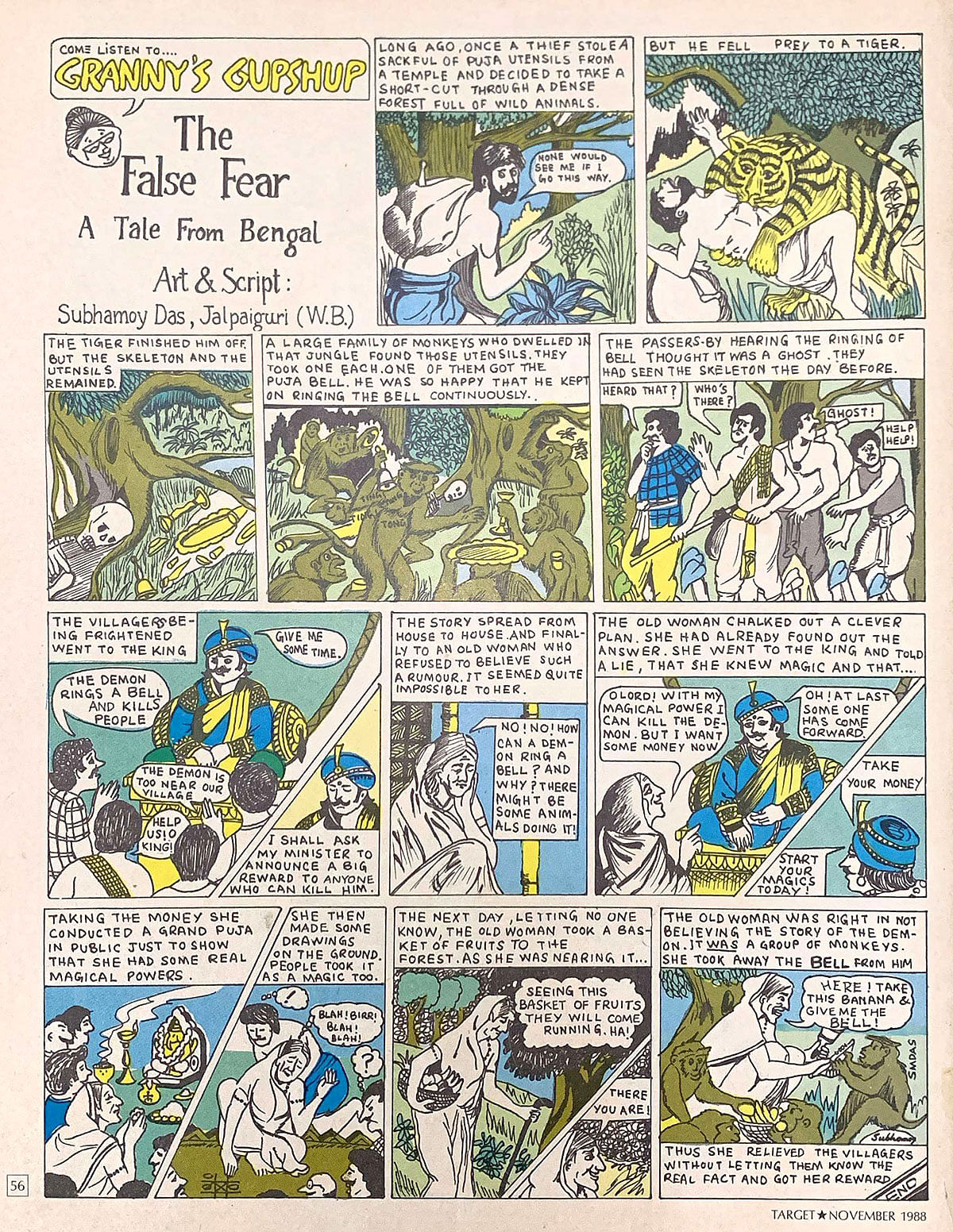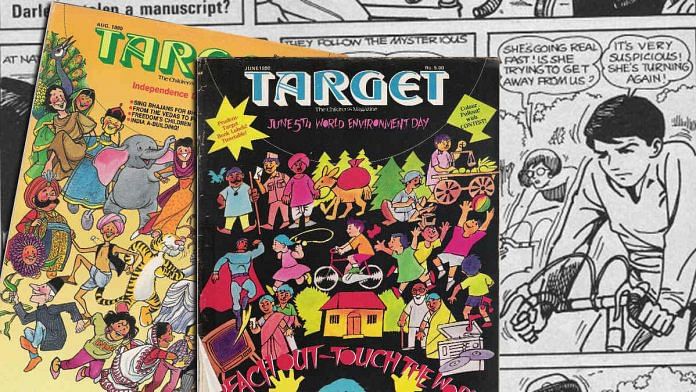New Delhi: Back in the 1980s and ’90s, owning a copy of Target magazine was the equivalent of being a ‘cool kid’, says a major fan of the series who, till today, owns all the issues printed.
Published by Living India Media Ltd, Target was a popular English monthly that existed between 1979 and 1995. It was the brainchild of Aroon Purie, who is the founder-publisher and former editor-in-chief of India Today and former chief executive of the India Today Group.
At a time when there was no internet and publishing tech wasn’t so developed, this Indian magazine for children managed to never miss a beat, and became the thing to read.
It had something for everyone
Aimed at capturing the imagination of children aged from seven to 12, the magazine featured everything kids wanted — limericks, exam tips and fun prep leave recipes, short stories, quizzes, puzzles, word games, celebrity profiles and even a section via which you could make pen pals.
The comic strips featured characters like Detective Moochhwala, Gardhab Das and Tegrat the Super Sleuth, who became beloved icons, thanks to their relatable stories and intricately detailed artwork. Detective Moochwala, illustrated by Ajit Ninan, who today makes political cartoons for The Times of India and India Today, was a real favourite. Sudhir Sid Thakur, a Target fan, met Ninan recently and got himself a signed illustration of the character.

The magazine reached its acme under the editorship of Rosalind Wilson. A British expat, Wilson “pioneered Indian authors to write local stories for children”, Vatsala Kaul, Target’s associate editor, told ThePrint. Ruskin Bond, Roopa Pai, Geeta Dharmarajan, Paro Anand, Manjula Padmanabhan — Target counted all of them and many more popular children’s writers as its contributors.
Vijaya Ghose, who took over the magazine after Rosalind stepped down due to health reasons, digs into a 30-year-old memory bank while talking to ThePrint.
“Target was a unique blend of memorable stories, with two-color pages on environment with big illustrations and short crisp writing, make-to-do, quizzes, puzzles and funny cartoons,” she says.
The only English magazine for children at the time, Target set itself apart from its contemporaries such as Champak, Parag, Tinkle and many more with its stunning production values as well as the quality of cartoonists and writers on its editorial board. Its stories were not about the usual kings, queens, animals and demons, but focused on real life situations and relatable problems for children of the ’80s and ’90s.
“We were aiming at a very high quality of content, reporting, writing and art,” said Kaul. “We were frugal (of necessity) and fastidious (of will).”
Also read: Mungerilal Ke Haseen Sapne: India’s Walter Mitty and a popular political tool
For the children, by the children
The magazine aimed for as much children’s involvement as possible. The November issue was entirely curated by them, an ode to Children’s Day.
“We had to plan two to three months in advance. Children would write, draw and replicate what we did and send it to us,” said Kaul. And for many of its young readers, the magazine had a lasting influence.
In West Bengal’s Jalpaiguri, Subhamoy Das devoured new issues at his father’s bookshop. The magazine went on to shape his life and career — after graduation, he joined Hindustan Times as a journalist. A born writer, he contributed stories to the magazine when he was just 15 years old.
“My first one was called Edge of Extinction, where I talk about a few birds that were on the brink of being extinct. I illustrated for this story as well,” he reminisces. He also wrote in the ‘Letters to the Editor’ section.

Some of the features came with memorable back stories as well. “Once we selected kids from different schools and went to interview Kapil Dev, at his peak. One child asked — which record do you want to break next? And Kapil said — this new Madonna record! That’s the one I want to break!” says Kaul.
Anita Jaisinghani, senior designer at the magazine, explains that “The editors used to conduct children’s workshops on arts and crafts, writing skills and various competitions.”
Marketing in the ’90s
At a time of no internet or social media, one wonders how this magazine reached as many people as it did. The wonder was that it was not marketed at all. Despite having a lot of infrastructural and emotional support, it had “near to zero advertisements and our marketing expenditure in the 90s was dismally low”, says Kaul. Target reached its peak the old fashioned way, by word of mouth. “It became iconic, posthumously,” she added.
Target featured interviews with everyone, from superstar Amitabh Bachchan to author Edward de Bono, former cosmonaut Valentina Tereshkova to writer-reformer Tara Ali Baig, and every sportsperson who happened to pass through Delhi or be there, including Jan Ove Waldner, Kapil Dev and Leander Paes. Managing interviews with such big celebrities at a time when there was a much smaller PR machinery in place, no smartphones or internet seems impossible to us now, but it was done, and done well.

Also read: When ’90s kids were getting drawn to cola, this Doodh ad made drinking milk cool again
A missing Target for today’s generation
As iPads and smartphones have replaced books, children of today don’t have their own equivalent of Target. Even if they do, the writing and illustration just don’t seem to be at par.
“We never cut corners when writing for children at all, we’d consult experts. But today that is not the case,” rues Kaul, who feels people don’t write for children in the same depth as for adults, because many believe children don’t need to know so much, a thought she disagreed with.
Target was last published in 1995, soon replaced by Teens Today, headed by Kaul herself. But for the children of the pre-liberalisation era and immediately after, the new magazine, with a more niche audience and content, was somehow not as relatable, it just didn’t make the grade.
Today, Target is still alive on Reddit and Quora discussion threads, Facebook fan pages and the memories of a generation that knew it had something special.
Also read: Udaan — DD series on life of DGP Kanchan Chaudhary inspired an entire generation of women




My favorite and very close to my heart! I would eagerly wait for the new issue each time!
I have forever resented Vatsala Kaul (sorry!) for killing Target and morphing it into a blunder called Teens today. Still don’t know why the publisher made this monumental blunder. Thank you Rosalind Wilson and team for making my childhood – in a boring small town – so special.
My children grew up with Target and I still feel bad that my husband threw them some day, during his transfer. Now I am very keen that my grand children should read this high quality children magaine. As a duty to loving public, Living India Media Ltd shuld republish old Target , as an online book. Lot of people will be happy to buy that.
Is it possible to publish the comics online? We might be able to inspire a whole new crop of Target fans!! 🙂
My favourite magazine growing up. And i so looked forward to the Adventures of Detective Moochwala and Gardhab Das the singing donkey. That was my first introduction to Ajit’s work . The adventures were a class apart., which held me in awe with the details in the work that Ajit put in. Neelab and Jayanto with Gardhab Das were hilarious and quirky.
Yes, Target was in a league of its own . The characters have so much of potential and would really love to see them revived in graphic novel or animation.
DOWN MEMORY LANE: This article in ThePrint today brought back memories of childhood days. I owe a lot to TARGET for it not only inspired me to read and write, and gave me an opportunity to try my hand at features writing while still in school back home in remote North Bengal but it also helped me choose my career of journalism a decade later. Thanks, Taran for doing this nostalgic story!